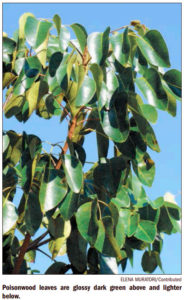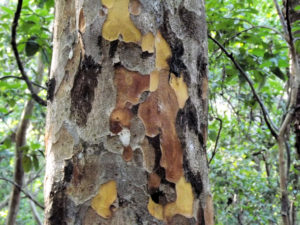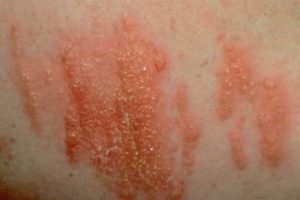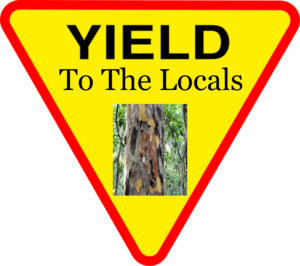More than 150 native plants call the Florida Keys their home and a few people can identify all of them. However, the poisonwood tree – Metopium toxiferum – Common Names: Poison Wood, Poison Tree – related to Metopium brownei (also known as chechem, chechen, or black poisonwood – is one plant that everyone, both residents, and visitors, should learn to identify. “Why?” you ask.
Poisonwood – the Good:
Although poisonwood may not be considered man’s best friend, it provides food for numerous migratory and local birds. The poisonwood has male and female flowers on separate trees. The female poisonwood has loose clusters of small green and yellow flowers that appear from late winter through late summer, and produce an abundance of small, orange, oblong fruits. This fruit is a major food source for many birds, including the endangered white-crowned pigeon, which consumes it in large quantities during nesting season.
Poisonwood – the Bad:
The poisonwood is a member of the cashew family, which also includes poison ivy, poison sumac, poison oak and, perhaps surprisingly, mango. All parts of the tree contain a resin called urushiol, which can cause rashes and mucous membrane irritation in humans. It is so potent that people have even been affected by water dripping off poisonwood leaves, and by inhaling smoke from burning parts of the poisonwood.
 “If poisonwood is dangerous, how can I identify it while I’m walking around?”
“If poisonwood is dangerous, how can I identify it while I’m walking around?”
Areas with only a few poisonwood may have signs posted, but this is not practical for native areas. Everyone entering native areas where poisonwood is known to grow should learn how to identify it prior to their hike. Unlike its relatives, poison ivy and poison oak, the leaf of poisonwood only occasionally has three leaflets; the norm is five and often there are seven. The leaflets are glossy dark green above and lighter below, and may have black blotches on them. The outer edge of the oval shaped leaflet is outlined in pale yellow and appears to be smooth. It has a distinctive yellow vein in the center. The poisonwood is semi-deciduous and tends to shed some of its leaves in the late fall or early winter.

“What if the leaves are not visible?” If you look at the trunk of the tree, young trees usually have gray bark while mature trees have red-tinted brown bark that flakes off in patches. Underneath the top layer of bark is an orange underbark, which may be covered in black patches. These black patches are the clear sap, which turns black when exposed to air.
Poisonwood the Ugly:
“What do I do if exposed to poisonwood?” As soon as possible, apply Tecnu Original Poison Oak & Ivy Outdoor Skin Cleanser according to directions. Also, launder all clothing and clean pets and tools with Tecnu. If you develop a minor rash, home treatment usually works; however, for a severe reaction you should seek medical attention. On your next walk be aware of your surroundings and beware of the poisonwood. They are only one of over a hundred native plants in the Florida Keys’ state parks.
Plan a visit at floridastateparks.org and experience “the Real Florida.” Susan Matthews is a volunteer at John Pennekamp Coral Reef State Park.
 DIY Poisonwood Rash Treatment
DIY Poisonwood Rash Treatment
To treat a rash from poison ivy, poison oak, poisonwood or poison sumac and help stop the itch, dermatologists recommend the following:
- Immediately rinse your skin with lukewarm, soapy water. If you can rinse your skin immediately after touching poison ivy, poison oak, or poison sumac, you may be able to rinse off some of the oil. If not washed off, the oil can spread from person to person and to other areas of your body.
- Wash your clothing. Thoroughly wash all of the clothes you were wearing when you came into contact with the poisonous plant. The oil can stick to clothing, and if it touches your skin, it can cause another rash.
- Wash everything that may have the oil on its surface. Besides clothing, the oil from poison ivy, poison oak, poisonwood and poison sumac can stick to many surfaces, including gardening tools, golf clubs, leashes and even a pet’s fur. Be sure to rinse your pet’s fur, and wash tools and other objects with warm, soapy water.
- Do not scratch, as scratching can cause an infection.
- Leave blisters alone. If blisters open, do not remove the overlying skin, as the skin can protect the raw wound underneath and prevent infection.
- Take short, lukewarm baths. To ease the itch, take short, lukewarm baths in a colloidal oatmeal preparation, which you can buy at your local drugstore. You can also draw a bath and add one cup of baking soda to the running water. Taking short, cool showers may also help.
- Consider calamine lotion or hydrocortisone cream. Apply calamine lotion to skin that itches. If you have a mild case, a hydrocortisone cream or lotion may also help.
- Apply cool compresses to the itchy skin. You can make a cool compress by wetting a clean washcloth with cold water and wringing it out so that it does not drip. Then, apply the cool cloth to the itchy skin.
- Consider taking antihistamine pills. These pills can help reduce itching, however use with caution. You should not apply an antihistamine to your skin, as doing so can worsen the rash and the itch.
If your rash is not improving after seven to 10 days, or you think your rash may be infected, see a dermatologist. A dermatologist can treat your rash and any infection and help relieve the itch.
Source: American Academy of Dermatology

